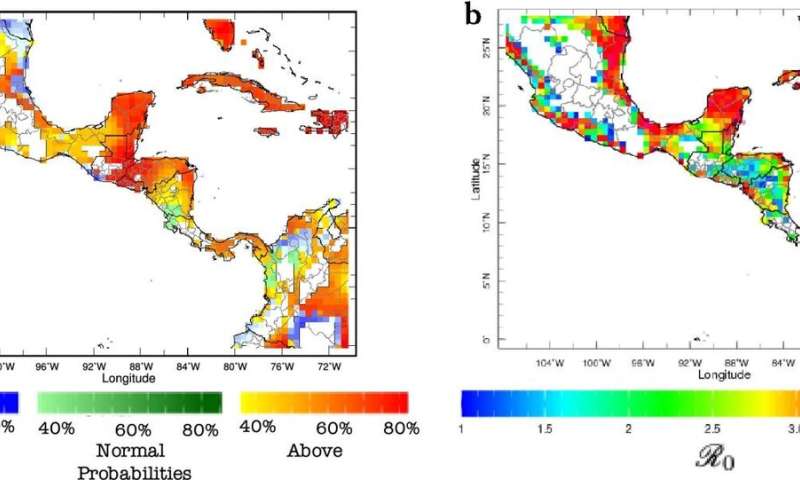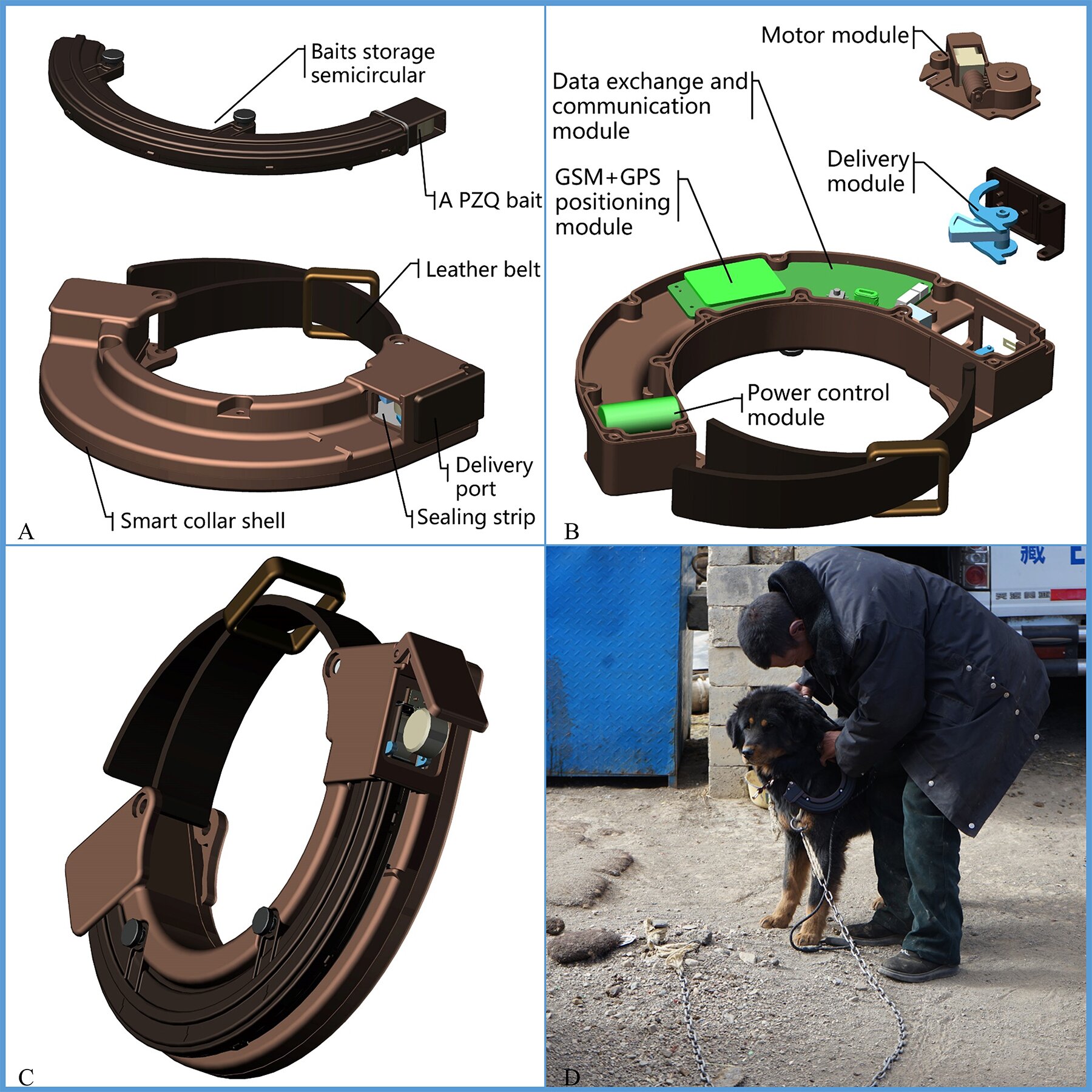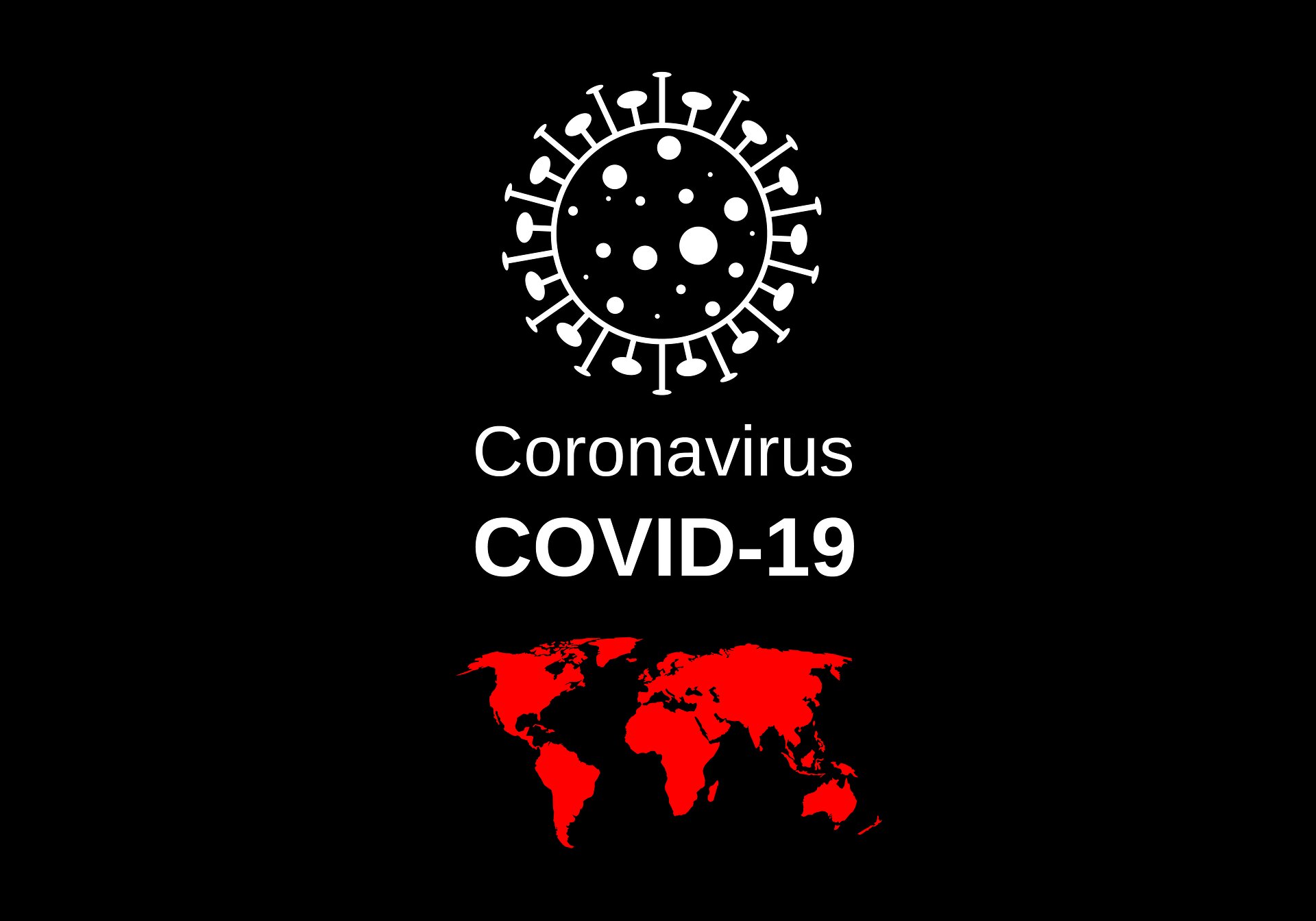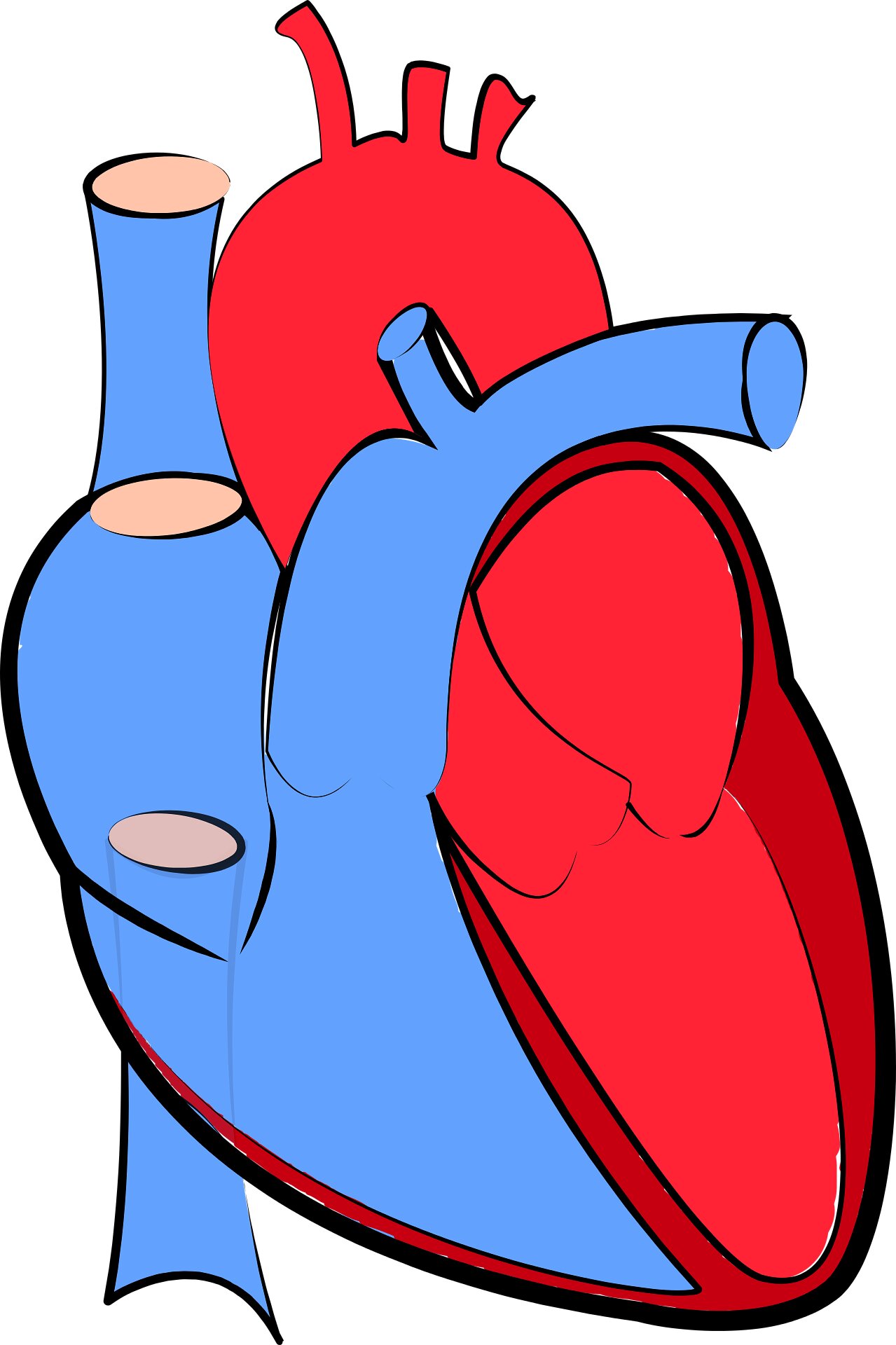#Tracking and forecasting outbreak risk of dengue, Zika and other Aedes-transmitted diseases
“#Tracking and forecasting outbreak risk of dengue, Zika and other Aedes-transmitted diseases”

Researchers led by Columbia University’s International Research Institute for Climate and Society and the Pan-American Health Organization have developed a system to monitor and forecast the environmental suitability of transmission of Zika, dengue fever, chikungunya and other diseases carried by species of Aedes mosquitos in the U.S. and neighboring regions.
Their results show that the forecasting skill of the new system is very good, with ‘hotspots’ of higher skill in Guatemala, Honduras, El Salvador, Cuba, Haiti, Dominican Republic, Jamaica and Puerto Rico.
The team published its findings in Scientific Reports.
The new system, called AeDES (aedes.iri.columbia.edu), is expected to help public-health authorities identify at-risk areas at least a month ahead of time, improving response and planning operations.
As a demonstration, the researchers used AeDES to predict that the current dengue outbreak in Central America will continue during the rest of 2020 and most likely will worsen. The compound effect of dengue and the ongoing COVID pandemic is expected to increase the number of coinfections in the region, the authors write.
Aedes-transmitted diseases cause more than 50 million infections every year worldwide, including in the United States, and cases have increased by 30-fold in the last 50 years because of changes in climate, land use and population.
These diseases, as with all mosquito-borne disease, are climate-sensitive-the risk of outbreaks goes up or down in part based on temperature, rainfall and humidity, which affect the life and reproductive cycle of the insects.
Supercharged climate-epidemiological modeling
“This is the first system for the region to monitor and forecast in real-time the conditions that are needed for transmission of Aedes-borne diseases,” said Ángel Muñoz, a climate scientist at IRI and lead author of the paper.
“We’ve combined multiple R0 epidemiological models with multiple climate models, as well as seven decades of historical climate data,” Muñoz said. (Epidemiologists use R0 to describe how contagious an infectious disease is. A value of 2, for example, means that a person who has the disease will infect an average of two other people.)
When climate centers make probabilistic forecasts of weather and climate, they use multimodel ensembles-which generate many simulations from many models so as to give a range of possible outcomes.
Muñoz and his colleagues adapted this approach for AeDES, combining four well-known R0 models with the 96 members (or total executions per month) currently in the North American Multi-Model Ensemble (NMME). As a result, the team generates 384 simulations each time it runs AeDES.
“Because we have such a huge sample to draw from, the probabilistic forecasts generated from these runs are really robust,” said Muñoz.
Public-health specialists can also use AeDES, which is powered by the IRI’s Data Library, to calculate and visualize the environmental suitability of disease transmission month-by-month going back to 1948, enabling them to better understand how climatic changes have been impacting different regions.
“The advantage of AeDES is that health ministry staff working at the country and subnational level will be able to adapt forecasts to their specific localities, allowing field actions to be much more targeted and tailored to their local conditions,” said co-author Ana Rivière-Cinnamond, from the Pan-American Health Organization. “Also, international and national health organizations could use the system to help identify future at-risk areas for vector-borne diseases-at border areas, for example, so as to alert authorities in advance to take action.”
In 2015, faced with a potential multi-country public-health emergency caused by the Zika virus, PAHO asked IRI to develop a system that used climate variables to try to stay a step ahead of future outbreaks. Based on the promising results of this initial collaboration (for more, read here, here and here), both PAHO and the National Oceanic and Atmospheric Administration’s Climate Program Office lent further support to IRI to develop and expand the system into what is now AeDES.
Muñoz and his team were also able to integrate the NextGen forecasting system and methodology (factsheet) developed as part of the Adapting Agriculture to Climate Today, for Tomorrow (ACToday) Columbia World Project.
“It’s a great example of how advances we were able to make because of Columbia’s commitment to ACToday-a project focused food security-led to advances for the public health community,” said Muñoz.
The two are not unrelated, Muñoz added. “COVID-19 has created a serious food-security crisis in Central America, and this is exacerbating the present dengue outbreak there. It is not only important to join forces between these two projects, it’s our duty to do so.”
More information:
Á. G. Muñoz et al, AeDES: a next-generation monitoring and forecasting system for environmental suitability of Aedes-borne disease transmission, Scientific Reports (2020). DOI: 10.1038/s41598-020-69625-4
Tracking and forecasting outbreak risk of dengue, Zika and other Aedes-transmitted diseases (2020, August 4)
retrieved 4 August 2020
from https://phys.org/news/2020-08-tracking-outbreak-dengue-zika-aedes-transmitted.html
This document is subject to copyright. Apart from any fair dealing for the purpose of private study or research, no
part may be reproduced without the written permission. The content is provided for information purposes only.
If you want to read more Like this articles, you can visit our Science category.
if you want to watch Movies or Tv Shows go to Dizi.BuradaBiliyorum.Com for forums sites go to Forum.BuradaBiliyorum.Com




